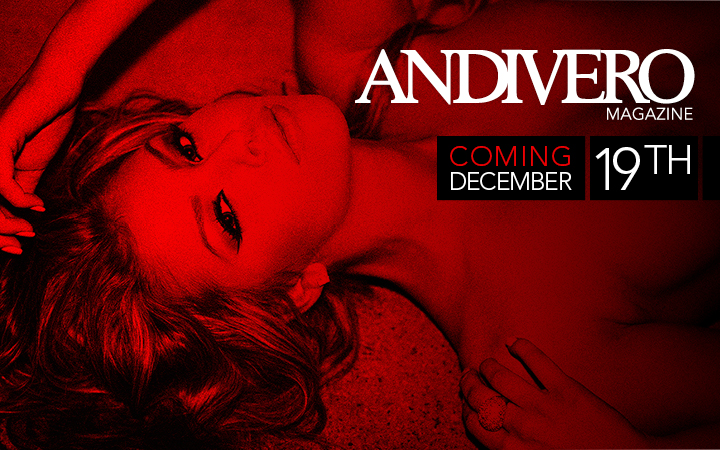In this “How I Made It in Fashion” series, BuzzFeed Fashion pulls back the curtain on some of the industry’s most influential and successful members. Here, casting director James Scully discusses his rise from dressing models backstage to casting the shows of some of the world’s best designers, like Tom Ford and Carolina Herrera, and why celebrities should finally vacate magazine covers.
[As a casting director], we are hired by a designer to choose models to fit the particular image of their company. It will basically start with a mass casting of models, followed by narrowing them down to around 40 to 60 choices, and then presenting them to a designer to then after narrow that number down to the top 20 to 30 choices, depending on how many outfits are being shown. That sounds very simple, but it’s not. In between meeting the girl and her actually being in your show, there is a lot of appointment making, money negotiations, and fighting other clients for the girl’s time or exclusivity.
There are quite a few top casting directors around, but many of them have a similar eye for a particular kind of model. For example Calvin [Klein], Jil Sander, and Dior all use the same casting person, and, to me, all of those shows look alike. That is not a criticism, but just an example of someone with a definitive eye giving their vision to their clients. What I think sets me apart from other casting directors is I deliberately choose people from opposite ends of the spectrum. Since you’re given the creativity to make the image of who a designer’s woman is or what the vibe of the show will be, I like having completely different clients which gives me a wider opportunity to cast lots of different girls. A Carolina Herrera cast is the complete opposite of Stella McCartney, as they are from Tom Ford, Derek Lam, Jason Wu, Lanvin, and J.Crew. To be able to tailor different casts for all of these different clients is the most fun part of my job. I’m from the old school “a fashion show is theater” world, and it’s not about just one kind of bland model for every show — it’s about one girl being able to be different things to everybody, which is the hallmark of a great model.
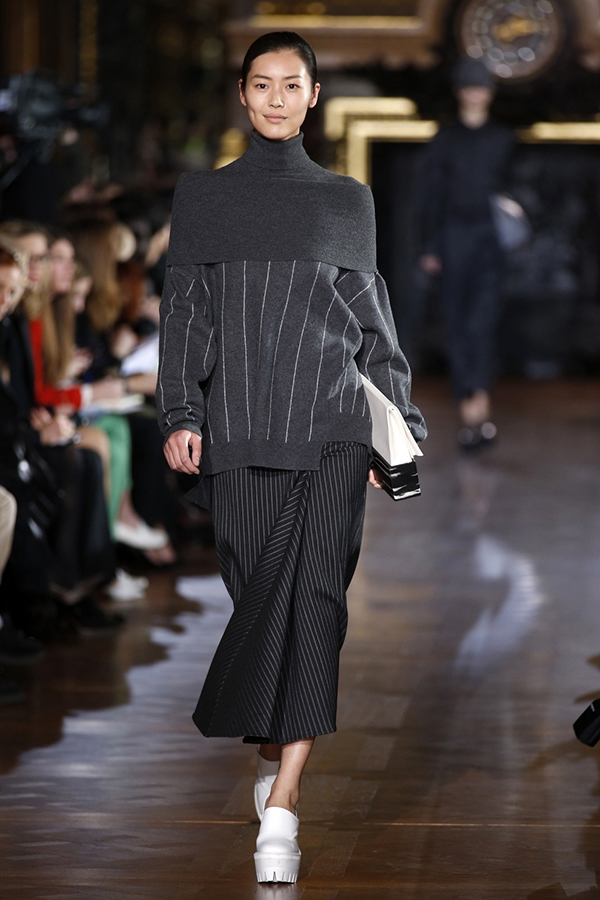
A model walks down the runway at the fall 2013 Stella McCartney show.
Image by Benoit Tessier / Reuters
I always drew fashion stick figures when we were given drawing assignments in grade school. I don’t really know where it came from. I can only assume I was born with it. But when I got a little older, I always looked up to my sister, Jean, who was very interested in clothes. She would occasionally have my aunt sew her an outfit that she saw on the cover of Cosmopolitan. I think those [Francesco] Scavullo covers and her copies of those outfits were my first real exposure to what I thought a glamourous person was. The earliest memory that really cemented my wanting to be in that world was seeing the first images of Yves Saint Laurent’s Russian collection. Being brought up in a white Irish factory town, I did not know who he was, but just the images of black, Asian, and Indian women wearing Russian peasant clothing kind of turned the notion of what the world was in my head upside down. From then on, I was determined to find out how to leave my town and become a part that fantasy world.
When I started college, I already had a job at [department store] B. Altman and Company lined up for my school project later in the year, but on my first day of class there was a bulletin board with a note that said, “Fashion show needs dressers. Be at Bergdorf Goodman on the second floor at 10 a.m. See Audrey Smaltz.” So I cut class and just showed up by myself. It turned out that Bergdorf’s was showing the first Haute Couture collection of Karl Lagerfeld for Chanel. I got to dress Bonnie Berman and Feliciatas who were the campaign girls [at the time] — both my favorite models. The whole frenzy that Karl and Inès [de la Fressange] as his new muse created was like being at a movie premiere; it was totally electric and I was bit by the show bug that day. [Bergdorf’s] staged so many monumental fashion shows in the 1980s, from [Jean Paul] Gaultier’s cone bra collection, Fendi’s first show in the U.S., the [Christian] Lacroix show in the World Financial Center, and I worked on them all. The show was produced by Christina Gottfried and Loving, who were the No. 1 [public relations] agency at the time; they did every major American show from Calvin, Perry Ellis, Anne Klein, David Cameron, the list goes on and they hired me to be sort of a run-around errand boy. Then Audrey Smaltz hired me soon after to be a part of the ground crew and I put myself through school working for them.
After college, I was the women’s merchandising director for a store called Charivari where I was now in the front row instead backstage [during a show]. After eight years, I really started to miss working on shows and wanted to get back to production again. Kevin Krier was a fashion PR/show producer who handled our PR and after doing a few events for the store we hit it off and he asked me to work with him. I joined him in 1993. My first show client he gave me was Todd Oldham, and if you were going to have a show in New York at the time that was the one! It was supermodel central. Then, casting directors did not exist, you did total show production for your PR clients and casting was just a facet of the total job. As his business grew, many of our clients became people who I still work for to this day. But it was the Tom Ford for Gucci/YSL years that really put me on the map.
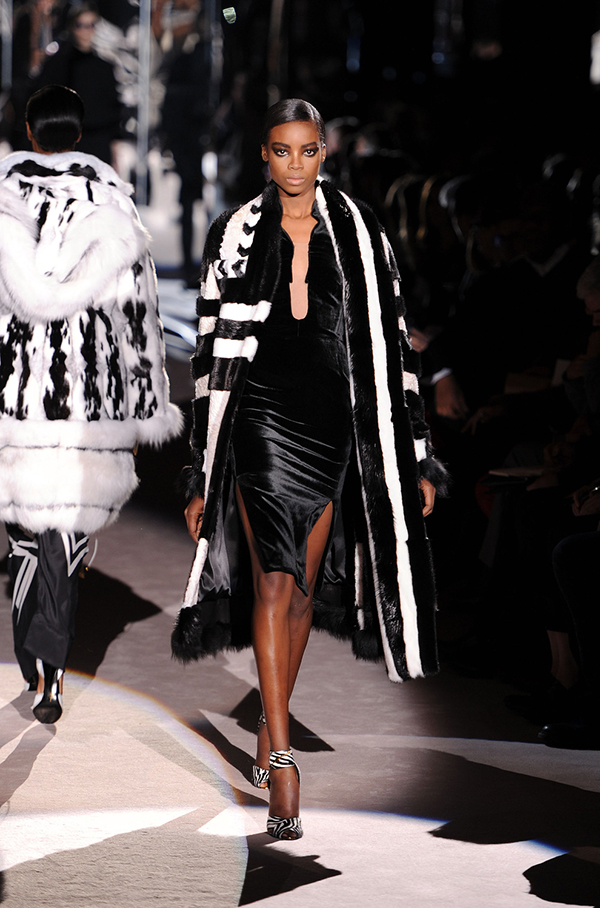
The fall 2013 Tom Ford show in London
Image by Eamonn McCormack / Getty Images
I decided in 1999 I needed a new challenge behind the camera and became the bookings editor of Harper’s Bazaar under Kate Betts. When she left, I left the business for what I thought was going to be for good. But after two years of living in a cornfield, Tom Ford asked me to come back to work for him and that is when I started casting on my own. When he left Gucci, I was ready to leave the business again, but both Stella McCartney and Derek Lam — who had just started his own company — asked me to continue with them. So I was officially in biz from that moment. Soon after, I started to freelance with both PR firm KCD and Bureau Betak and here I am! So much for early retirement.
I would say Sept. 11 really changed the whole face of this business. Some things did not exist before then that I think have had a negative effect on the business. As a result of that event are celebrities, the internet, stylists, and jobs for trade. Now that models have lost the American fashion magazine covers [to celebrities], there is no longer a standard of beauty. I miss model covers. Celebrities are not inspiring to people in fashion. They are all captivating on film, but when you put them in front of a fashion camera, the photographers — and 99% do not want to shoot them — goes on autopilot, and you get nothing but a dead image of an average beauty in a gown.
When there were top models, you needed them for your shows; they called the shots and they did what they wanted so if they did your shows you were valid. Since there were no covers, stylists who were also not super keen on shooting celebrities needed new model fixes constantly, and with the hiatus of Tom Ford, glamour went out, and the Prada effect came in — just tons of prepubescent, underage girls, nameless faceless, and, jokingly, all exclusive. Though I thought this worked brilliantly for Prada, with the advent of Style.com, everyone could see the next day [which models] did what and every stylist just went bonkers trying to get these girls first, and copy what they did, which in my opinion only worked for Prada. The sad thing is none of these girls were very interesting or even remotely attractive in real life, but that did not stop stylists from forcing you to book them. [The stylist] then got bored [of that model] after one season, and then they were gone, and you started [that cycle] all over again. So it was no longer about building a girl’s career. It was about looking online and just trying to get what someone else had. And the few who became stars out of that era were the only girls who stood out because they had all the qualities of an old supermodel.
Then Nicolas Ghesquière just took it to a new level of ridiculousness at Balenciaga with new casts every season of girls who would never work again after that show, but the frenzy it caused for everyone to get these girls! When they saw them in real life, they would look at me like I was crazy. I felt like I’ve been being punked for the last 10 years. I miss him, but not what he’s done to the business at all. I feel like all of that is starting to come back into check again.
The other thing that has changed is the role of the stylist. Fifteen years ago, designers did their own shows with no assistance from editors. As globalization made many businesses huge, their roles became more involved. I’m not necessarily sure [if this was] for the better. For me, fashion shows are theatrical productions. There are so many facets involved — the model bringing the clothes to life and giving character, the emotion of the music, timing things a producer does, etc. I think a lot of today’s stylists lack that sense of theater because they were not around when shows were more theatrical. They usually strip that element from the production so it looks, in their eyes, modern and cool. As a lot of them have singular visions — they take the same thing from one house to the next — so all of their shows look the same. That said, I have the great honor of working with many of today’s greatest, but all of whom I think have respect for the houses they work for — with some input on the shows, but at the end of the day, they care about the clothes and not their egos or personal agendas. And that’s how it should be.
People in fashion forget the big picture sometimes. These images go around the world for the average person to hopefully aspire to see themselves in and relate to a brand. Not as a testament to an editor’s credibility. As Kevin Krier used to say, “A great show with great models can mask a bad collection, but I think great clothes with a plain show and dead girls… what a waste.” And now everyone expects these girls to do shows for trade, and/or nothing, just for the caché of working with a great stylist who promises the moon and rarely delivers. If Linda Evangelista were still doing shows today, she would have to re-quote herself and now say, “I would not get out of bed for less than $10,000 worth of trade a day!”
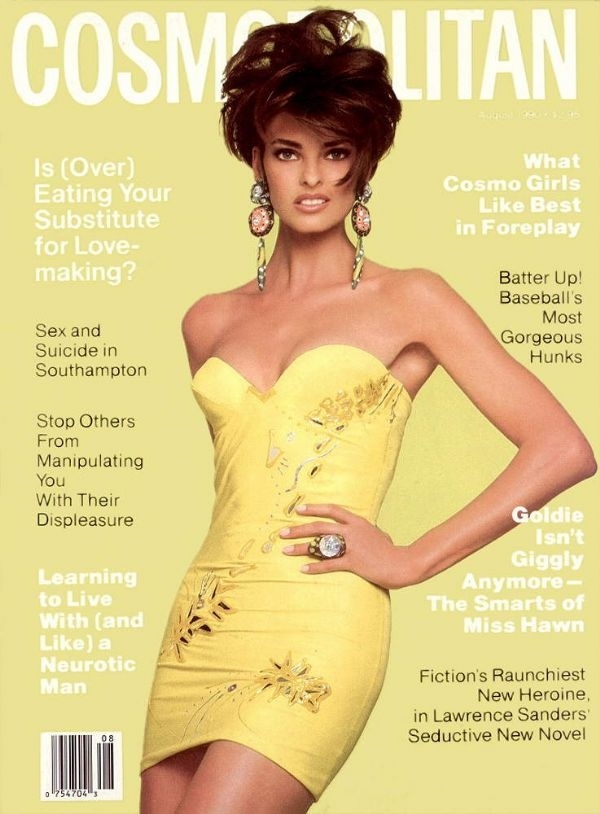
Linda Evangelista poses on the cover of Cosmo’s August 1990 issue.
Again, with the advent of the internet, and the opening of Eastern European and Russian borders, the age level of the average model dropped from 18 to 15. That’s basically a girl who has not hit puberty and by the time she hits it, people would accuse her of getting fat — and this was caused by the revolving door of Calvin, Prada, and Balenciaga exclusives that got out of control. Age and weight go hand in hand, and I personally have a problem with asking a teenage girl to do a woman’s work. They are neither physically or emotionally developed to handle the rigors of this business. People forget they are children and not women. However, the CFDA [Council of Fashion Designers of America] and British Fashion Council have made great strides to regulate this, and I feel again we have now turned a corner on this issue. And just last week, thanks to Sara Ziff and The Model Alliance, the child model law was passed. This is set up to discourage hiring girls under 18, and is about to put the business in the right direction again — possibly change it back to the way it was.
So many things [go into being successful in fashion], desire, drive, being in the right place at the right time. I’ve always loved this business, I want to stay in it and retire in it. Sometimes, I find the current state of fashion sad and frustrating. I can be very outspoken about it because I want it to be as exciting for future generations as it was for me. There is such a malaise industry-wide and I mean no insult to people by what I have said in this interview. But everyone I know — including many of my fellow casting directors — know what I’m saying is the truth, and hopefully by getting the word out it will cause the changes we all want to see return.
I’ve contemplated just giving up on the business so many times, but there is always a ray of hope that draws me back. Kate Upton on the cover of U.S. Vogue is one of those shots in the arm our side of the industry needs. I know celebrities are a necessary evil, but I’m really hoping this will not be the last model cover. Just the beginning of a few more, even if it’s sporadic it gives me hope to stick around to see that day.
If you’re a young kid and you’re smart, you should know who the players are and come work for one of us. This is not just about booking a person for a show. It’s about developing an eye — yours and your future clients. Most of all, if you think you have the chops, always stick to your convictions. Don’t let someone else influence what you think beauty is or follow what is of the moment. Be fair even when the situation is not. And, most important, being mean gets you nowhere except on people’s shit lists! The point of this business is it doesn’t have to be business! It should be fun — for you, for your clients, and especially and most importantly, the models. Always treat them like gold. I’d like to think of myself as disproving the notion that nice guys always finish last.
—As told to James Lim
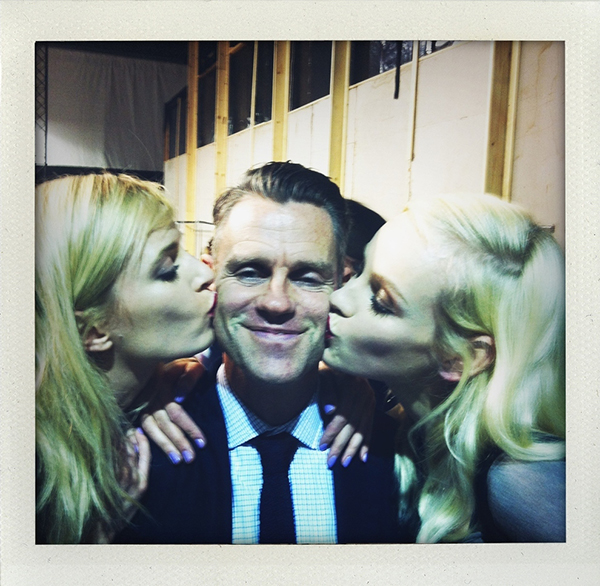
This interview is from Photo.net, I did not write it. You can see the original interview here: Photo.net
Enjoy!
–
by Hannah Thiem, March 2009 (updated February 2011)
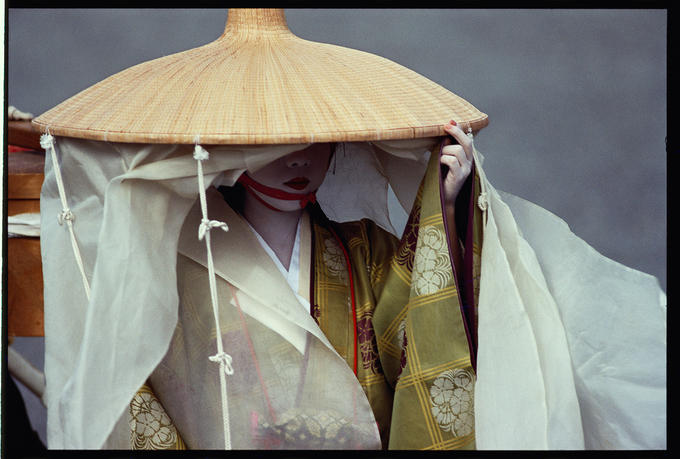
Tell us a little about your time shooting for National Geographic.
I’ve been a staff photographer at National Geographic for several decades. Prior to that, I had worked as a staff photographer for two newspapers for a short time right out of school, then went to Geographic and I’ve been there ever since. I had been on staff until last year. They’ve eliminated the position of staff field photographers at National Geographic to switch to an all freelance photography department.
How does that change the relationship with National Geographic, moving from staff to freelance?
It’s very exciting for me. It was time. I’ve been there my whole life. I always talked about being on my own and doing other things, and now I can. When I left, it was a great time. Now, with the economy, it’s a little harder. It’s been pretty tragic since then. Who knows what’s going to happen with the photography business, especially with documentary/investigative journalism photography. I’m still doing work with them. I just finished an assignment on Venice, which was my first major assignment shot entirely in digital. We just finished the layout last week.
National Geographic has been the pinnacle for so long for photojournalists, documentary photographers, and science photographers. How long do you see that lasting? Do you think National Geographic will be able to survive the digital and online media push?
I don’t know. No one knows the answer. The more I’ve had time to think about my next move, the more I realize how much I love to photograph. I just love taking pictures. While there are other things I could do such as editing, there’s nothing like taking photographs for me, and I’ll be happy as long as I can keep doing that. The final medium doesn’t matter as much anymore. I used to think that you had to have a magazine in your hand. Currently, there are all sorts of ways of looking at photographs and I think that if photographers don’t embrace all that, we’re lost.
I’m one of the last converts to digital. Now that I have, the advantages of digital for me have been huge. It’s really renewed my enthusiasm for photography. Usually on a project, I’m in the field for a month or more at a time and unable to see any pictures that I’ve taken. To be able to see the pictures is huge. Before, I had to just rely on faith that the camera was working and that my settings were correct.
I never was that interested in equipment and technology until went freelance and switched to digital. I’ve always just used whatever I could to interpret what I wanted to show. The kinds of photography I was doing in small places, small rooms, and intimate spaces, I didn’t enjoy using flash. It was so intrusive, disrupting, and I never really learned to master flash technique. Now, I can see in the dark with digital. I like to think I waited to switch to digital until they’ve optimized all the equipment, and I was able to jump in at the end of the digital revolution [she laughed].
What is your typical lens kit these days? Have you had any major focal length changes over your career?
I find all the Nikon zooms with VR (vibration reduction) to be pretty cool. I’m using the same focal lengths, but instead of having to use five prime lenses, I have two zooms, which has simplified my life enormously. I do a lot of wide angle and moderate telephoto work, and occasionally will use a 300 or 400mm on very special things, such as the “21st-Century Slaves” story for long shots down streets where I was not supposed to be.
Can you relate a quick synopsis of how you broke into this field of work, specifically the larger format photojournalist story telling?
Our choices were much fewer when I was starting out. Fine art photography back then didn’t exist as a concept. It wasn’t appreciated as much as it is now. Only a few magazines existed for this line of photography: Life, Look, and National Geographic. Then Life and Look folded. National Geographic, Time, and Sports Illustrated, and newspapers were all that existed for a time. That has changed so much and so fast over the years. There are just so many venues and opportunities now for photographers, if you move away from the printed medium. You see newspapers dropping like flies, magazines folding or getting rid of their staff photographers. I don’t know what to tell you on the photography career path right now. It’s kind of scary in the documentary/news photography line of work to get paid for being a photographer. There are all kinds of outlets now online, but to have someone to support your work, that’s one of my biggest fears with all the newspapers folding—who’s going to pay investigative journalists? Can the people who do the work make a living?
What were some real turning points in your career?
- In college, Cornell Capa who started the International Center of Photography, came out and saw my work, gave me a grant and got me exhibitions in New York. That was the start of a great relationship and got me onto a certain level of being seen or known.
- Getting a summer internship at a newspaper and staying on there.
- Being laid off at the Denver Post and having the Director of Photography atNational Geographic call me the next day with an assignment. That was the major turning point, and probably the last big one.
- A grant from Kodak to do the Geisha book.
- Moving to freelance.
With so many outlets going down, disappearing, or changing, does grant work come into play in your career? When you mentioned Kodak, though, as a previous grantor, it’s apparent a lot of companies that you normally might have been able to approach for grants to support your work are fighting their own battles to survive.
That was something I was going to start looking into to support my freelance work. The kind of photography I want to continue doing is very much about human rights issues and “changing the world.” I was thinking that grants were going to be a way forward, but who knows about that.
Can you take a moment to describe what you enjoyed about working with National Geographic? What doors do you see opening for you now that you’re freelance, and what challenges do you face?
I really love the kind of work that shines a light on human rights issues. It started with the story I did on 21st-Century Slaves, and then I did the story on “Love”, which turned into Love & Marriage as a human rights issue around the world. I’m very interested in the conditions of women around the world and in some way helping to empower women in countries where they’re not empowered. National Geographic has always been a great medium to do that because of its reach. Currently, they also publish 32 language editions so the reach is all over the world, much more than it used to be. I know they still want those kinds of pictures and I fully intend to continue working with them on that.
I want to see what other kinds of outlets for this type of work there are. It’s just been so crazy lately. My wonderful assistant and I have been getting everything organized to set up my business at home—getting new computers and equipment, monitors and printers. Setting up a business at home. All these things I used to have readily available at National Geographic, but I now have to take care of myself.
Photographers of the current generation don’t experience a male/female split. Was that a struggle for you when you were starting out?
When I got into the business, women in all sorts of fields and professions were finding themselves as the only women or first women in the business. I didn’t think about it in the beginning—I didn’t know that photography was considered a male profession. I just thought, “I can do this, this is wonderful,” and just plunged ahead. I was always the only women every place I worked on staff. I would be asked to do something and I would be glad to feel accepted at last. Then I would hear, “Well, we do need a woman on this panel because it’s all men, we need a woman.” It would be a slap in the head again. Which is it, you need a woman, or you like my photography? There was always that doubt because you were reminded constantly of it. Now it’s a non-issue.
Did you feel like that came from above? Were you fully accepted by your colleagues?
I had nothing but support from my colleagues. I think that photography is a really unique profession in the willingness that photographers have to share information and camaraderie. That’s been huge from day one and what I loved so much about the business. In the darkroom at the newsroom, the other photographers were fabulous helping me along. It’s been that way my whole career.
In the field, however, I sometimes was not taken seriously, especially in very male-dominated cultures. For example, I requested permission to photograph a king and the reaction was, “where’s your photographer?” Me! It was a struggle quite often. I’ve chosen to never dwell on it, for therein lies madness. You just do the best you can, and people are either going to accept it or not.
Are you currently serving in some sort of mentor capacity to younger aspiring female photographers?
Not in any sort of organized way. It’s more informal. I get emails from young women all the time. Also, many successful women have come up to me and said, “I met you at a workshop and you said this and that, you inspired me.” My reaction to that is “Oh, thank goodness.”
I wanted to get some background on how you’ve worked in the past and currently on some of your stories, especially the “Geisha” project. What is your process from start to finish? What’s your process for completing the project?
Early on, it was really hard to get a story idea through at Geographic. I took assignments they gave me for the first decade or so. As the only woman on staff, I also felt the need to prove that I could do anything the guys did. I didn’t really specialize early on, I just tried to do everything—sports, adventure, outdoors, landscape, people. When it seemed like the guys were starting to specialize in things, I thought, now I can specialize too. I’ve proven I can do all these other things, and now I started proposing concept stories, like “Beauty” and “Love” and “Slavery.” They were all my ideas.
Could you walk us through the “21st-Century Slaves” story?
That was my idea. I read a small thing in the newspaper about the passage of the Anti-trafficking Act. I started asking people what they knew about trafficking and slavery and nobody really knew very much at all. That inspired me to look into this issue further. I proposed the story, thinking it probably wasn’t the kind of topicNational Geographic would do. To my surprise, they accepted it. I felt quite overwhelmed at that point, realizing I had no idea how I was going to do this. I started researching, placing one foot in front of the other. One thing leads to another and you start finding the people who are going to help you. You do your research and find the people who know the subject. I went to all these NGOs and conferences on slavery, I found anti-slavery groups that were helpful.
Then I sat down with the Illustrations Editor, Susan Welchman. Every story at National Geographic has an Illustrations Editor who shepherds the whole story through from the concept to the budget to the story plan, locations, length of time, how much you’re going to spend. We then planned what kinds of slavery and trafficking I was going to cover in this story. They wanted a broad look at all kinds of slavery and trafficking. I researched where I could get the most access for each kind of slavery and laid out a master plan of 10 countries I wanted to go to: the internal trafficking of children in Benin and Ghana in Africa; child labor in India; sex trafficking in Thailand, Israel, Mexico, Italy, and the US; illegal adoption in Guatemala. The legends writer and researcher are assigned to the story right at the beginning of the project.
Halfway through, we showed the pictures and the story thus far to the editor and the team, and they were really impressed at what we had been actually able to get, to see and shoot. They gave us the go-ahead to finish the story.
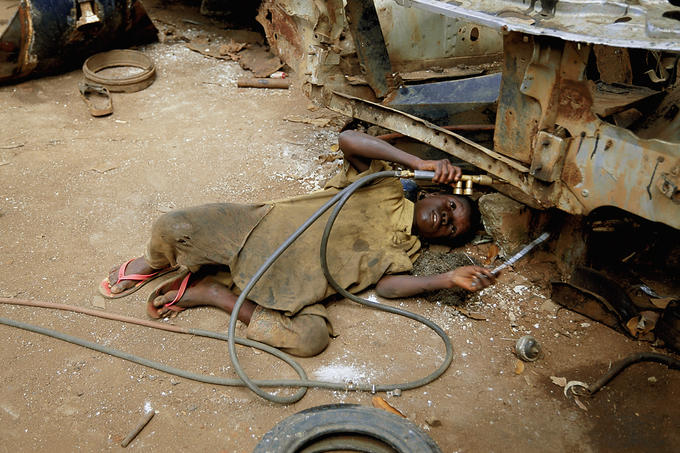
How many projects get stopped at that point?
Not very many. They have a good idea of what’s doable and what’s not and they tend to use photographers with a proven track record. It’s a very small proportion that get cut. Sometimes the photographer will say, “We just can’t do this,” for whatever reason. Also, at the halfway point, you can also completely revise your idea. If the entire story proved impossible to actually get photographic evidence of what was going on, maybe we would have just turned to child labor or to something else.
And then how do you bring a project to completion?
You complete the second half and show the final photographs to the editor and everyone else. It has to receive the final stamp of approval. Then, everything starts to come together in the office—the layout, the captions (legends), maps, charts, photographs. the research. I can’t tell you how grateful I was for the incredible research staff that National Geographichas, and to be able to tap into it on that story. Slavery really hadn’t been done before in a sort of global overall look and I was terrified that I had gotten it wrong. If this is so big and pervasive, why was I the first one to try to be photographing this? I almost wept with gratitude when the research department came back and confirmed that what I had found was all true.
What kind of time frame did you have to work with all of that?
I always come in under budget on these stories. We were very careful in targeting and very lucky in the quality of the help I had on the ground in the places we went to. All the research and arrangements we were able to make in advance meant I could hit the ground running—I could spend three days in Israel and find myself in a brothel in Tel Aviv shooting the story immediately and out in 3-4 days. It was that kind of advanced planning and setting up that really made the project possible. There had been previous stories out there on just sex trafficking, child labor, or illegal adoptions. No one had the budget to do the entire issue of trafficking in a huge global way—only Geographic had the budget to do a story that all-encompassing.
The entire spread ended up being about how long? That’s a very broad topic to cover.
The final story ended up being 26 or 28 pages, which was a lot at that time, and is a lot now. Just one picture was featured on each of the different aspects of trafficking. The project got the biggest response in the history of National Geographic up to that point. This was just unbelievably gratifying to me. The overwhelming response wasn’t just people writing in congratulating us on the story, it was people sending money to the organizations combating trafficking, FBIagents asking to be trained in trafficking issues, (which was one of the issues in this country, that they didn’t recognize trafficking for what it was, they just looked at it as prostitution or immigration issues. Law enforcement didn’t really know how to deal with the issue of sex trafficking. Now, FBI agents have been trained in that issue.) The publication of the story actually instigated changes—and you can’t ask for more than that.
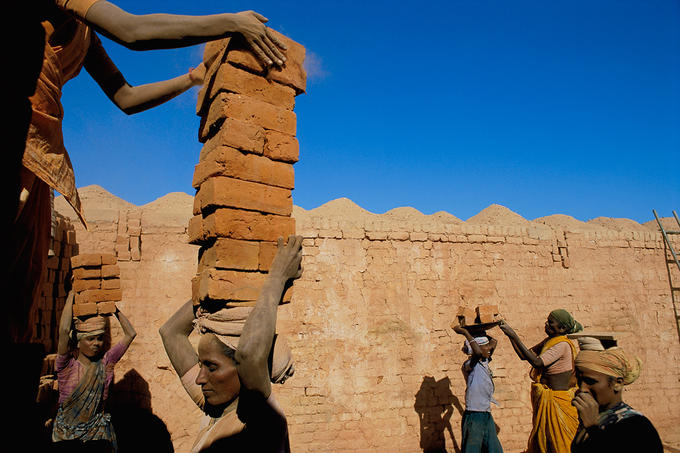
What work of yours are you most proud of, either because of a personal triumph, the physical success of the project, or you just really liked the images that came out of the project?
Almost every project up until then has been astounding for different of reasons. The “Geisha” project was my favorite to do. It was something I did on my own outside of National Geographic. It felt wonderful that I was able to do something like that all by myself—organize everything, get the publisher, write it, organize the editing and layout—everything from beginning to end. That was huge for me, especially given the fact that it had never been done before, that nobody had ever photographed extensively inside the Geisha world before. I had no idea when I started if I could do it—if there was any way a geisha was going to let me inside a geisha house. At the end, the project was very gratifying to me and so beautiful to photograph. I want my photographs to either be beautiful or meaningful—and hopefully both. This project was a combination of both. Mainly, it was just a pleasure to shoot and look and to be there. I love writing, so it was also a chance to prove I could write.
About half the time, it seems that the photographer and writer run in separate circles and about half the time, they’re in the same foxhole. Does that depend on the story?
It depends on the story. If it’s an adventure trek and the writer and photographer are together, they’re going to be having the same experiences. On all stories, the photographers and writers meet in the beginning and really hash out what direction they want to take, what their point of view is about the topic, and find out if they’re on the same page on the point of view, and making sure they going to end up at the same destination even if they go different routes. They’re completely different disciplines: photography and writing. A photographer often doesn’t like waiting around with the writer interviewing the Minister of Information, and the writers really hate sitting in the car with no one to talk to while the photographer waits for the beautiful light and the camel to walk by. They can really get on each other’s nerves if they’re trying to accommodate each other on an every day, all-day basis. Writers don’t usually have as much time in the field as the photographers do. By necessity, the positions are not hand-in-hand.
What kind of mode do you go into when you’re in the middle of a project? How do you feel when you know you’re onto something and following the leads that keep coming?
It’s very exciting. You feel really good on an intellectual basis—that you’re nailing the story and heading in the right direction. For most photographers, when they really love what they’re shooting and into the photographs, they’re in the zone and it’s a zen thing. Nothing else exists. You’re in your groove. I’ve talked to other people like figure skaters, athletes, writers, people who love what they’re doing and it’s so intense. That’s the joy and the payoff for them—to be completely engrossed in that incredible creative zone. That’s what’s fun. Of course, it ebbs and flows. The next day, you couldn’t shoot your way out of a paper bag. Nothing goes right, the people don’t show up, all your reflexes are off, and you’re missing every picture.
What’s not fun about your job? Even great jobs have aspects that aren’t wonderful. National Geographic is a highly idealized job.
The things that photographers go through to get those pictures are really incredible. If you get a group of photographers together and start telling war stories, you just can’t believe what you’re hearing. Some of the projects have been dangerous physically, stressful mentally, and you’re off by yourself for weeks or months at a time with no friends, no time off, no way to escape the project. It really has downsides. Your personal life really takes a hit. I didn’t know how hard it was going to be when I started out. When I realized how hard it was I thought of just doing this for five years and then move on. But, the opportunities just kept getting better and better—offers to cover more interesting stories, go to more interesting places—and soon a lifetime went by!
What is your process for gaining people’s trust, either before while starting out a project, or when you’re in the middle of the project, how do you get to the core of what you’re going after?
I’m always completely upfront with everyone about what I’m doing, what I’m looking for, and what I’m going to do with the pictures. I try to engage them in the process—to become interested and invested in it too. Then I enjoy the people. In terms of long projects, like the “Geisha” project, you just show up every day, and you try to befriend one person and ask them if you can photograph their friends. For a lot of projects, I just take it one person day by day. It’s just who you are and the way you approach people and relate to them that enables you to gain strangers’ trust.
Have you had any of the people write to you, follow your stories, or request copies of the photographs?
Usually, I get the names and addresses of everyone that I photograph in any real extensive way. if we use their picture inGeographic, they get copies of the magazine. For the rest, since I photograph so many people, I tell them at the beginning that I can’t give them copies. I don’t have enough time or resources to send them pictures. I’ve stayed in touch with a lot of people.
You’ve talked about 21st-Century Slaves as an example of one of the largest you’ve worked on through the magazine. How does what you’ve learned from working with National Geographic on the large projects translate to your average small-town photographer who wants a project to call theirs?
There are stories everywhere—in your own house, your backyard, your town. You need to find out what you’re interested in, what you’re passionate about, what you want to change, celebrate, illuminate, interpret. It’s right there. You just need to get started. Once you do, things start falling into place, after you’ve made the first introductions or the first start on the project. If it’s going really well and you feel you’re onto something or doing a beautiful job interpreting what it is you love, you can take that beginning to someone to get funding. You can say, “This is what I’ve done, I want to continue this in a global way or in another country, but I can’t do it on my own.” Rarely will an editor just take a chance on someone and just offer a project out of the blue, without some kind of demonstration of your abilities to execute the idea. I know a lot of projects at National Geographic that started that way. People came in with an idea that they started and then they’ve gotten funding to finish it.
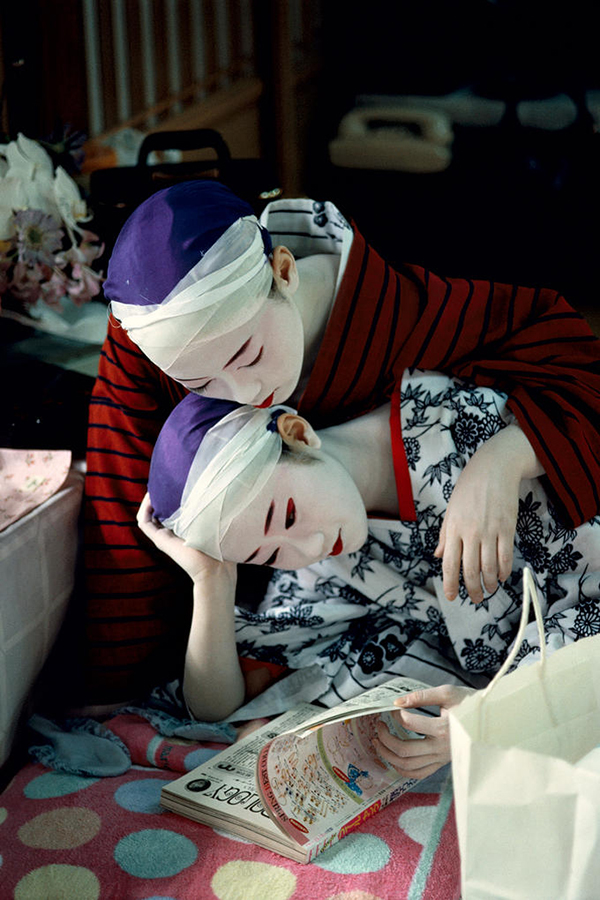
A little video message from the Editor. (Click Image)
Thank you to everyone involved in creating this amazing issue 10, and thank you to everyone for all their support!
Edit: Issue 1 of ANDIVERO Magazine is available now for free. Click the link above to subscribe and download your free digital copy.
—-
Debut issue being released on December 19th, 2012
Digital version FREE
Print version for purchase through Magcloud.com
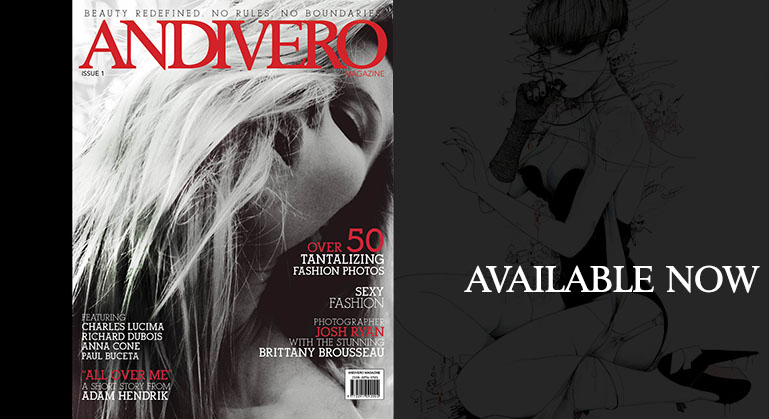
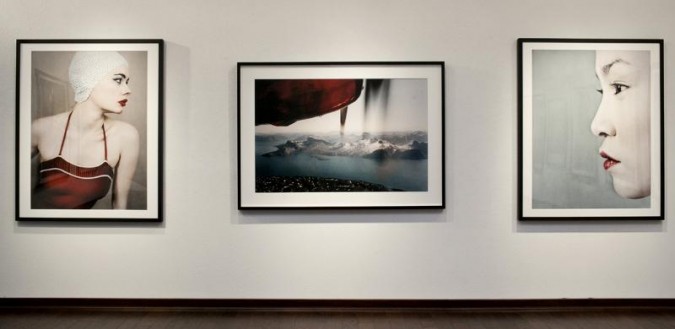
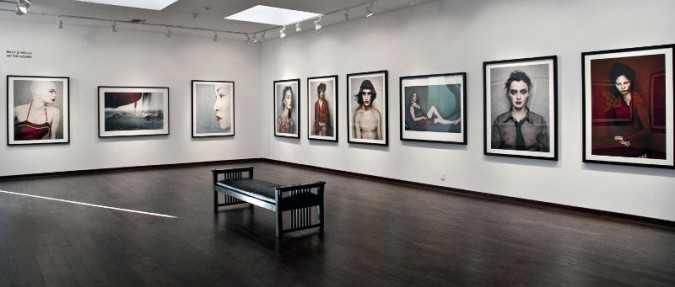
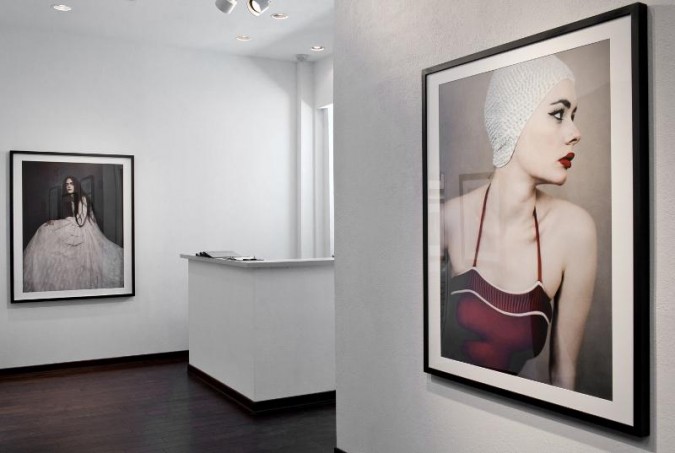
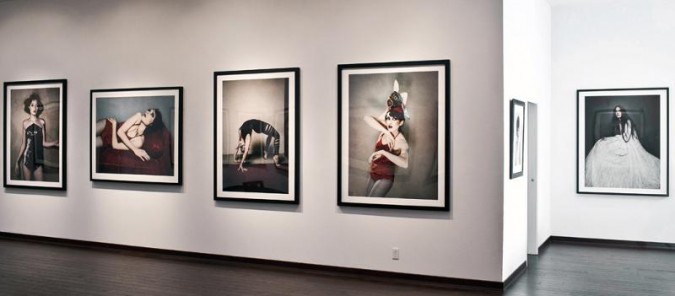
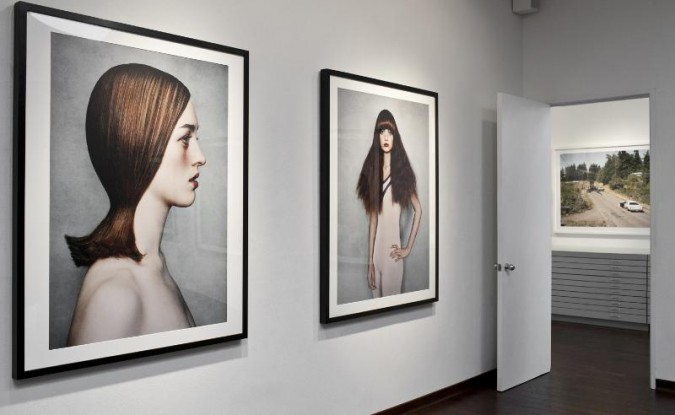
But back to what I was saying… I feel like a fraud calling myself a photographer and not having any rainy photos in my collection! When I was in photography school, professors would encourage us to get out there at night and take some shots of the city all dewy and shiny from the October rain, and I carried my camera everywhere with me, so believe me I tried, but I tried while running in and out of buildings for warmth, haha.
If street photography isn’t your thing, maybe planning a fashion shoot in the rain could make for a better outcome. I think that’s what I was missing all along, because street photography doesn’t just happen, you have to hunt for it. I have infinite respect for photographers like Cartier-Bresson, who capture that perfect moment, the “decisive moment”. Those moments always eluded me, but I wasn’t willing to wait for them either.
I don’t think I will ever stop talking about Cartier-Bresson’s work. His photographs were some of my first inspiration, and still are to this day. If you want to read more about Henri Cartier-Bresson, there is a lengthy blog about his Moma Exhibit a couple years ago, and his life and works on this website.
Some work from Henri Cartier-Bresson.
Now for some more current inspiration… if you have any good models on speed-dial (who still has speed-dial?), then I suggest you call them up for a rain date with your camera.
Photos from: tomaas.com and google
]]>
Well as a person whose all time favourite movies are Alfred Hitchcock’s PSYCHO, and the cult classic Empire Records, I’m not sure how I feel about an actress like Kristen Stewart. However, she does represent being true to yourself and not buckling under the pressure to being like all the other vapid, consumeristic young celebrities, and I like that about her. She’s also gorgeous, so I think she was a good choice for this ad campaign.
Florabotanica by Balenciaga Paris. Photography by Steven Meisel.
There are two images released, and also a nice behind the scenes video. What do you think?

.
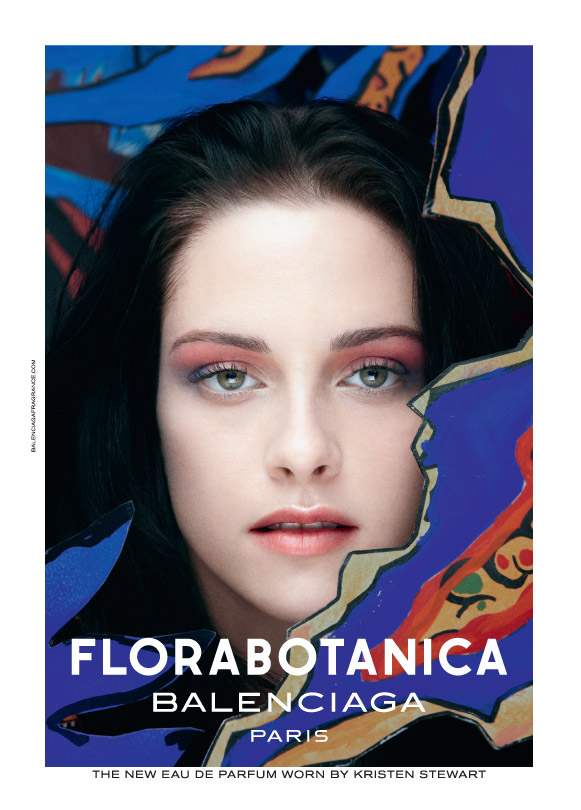
.
]]>
Video by Yoann Lemoine, music by Woodkid, starring Elle Fanning, this video is a departure from the usual parfum advertisements.
Elle was a great choice for this video, she’s like a dangerous little pixie.
It’s very dramatic, and I’m not sure if it’s because I have the window open, but I got chills while I was watching this video.
It’s beautiful. Check it out
LOLITA LEMPICKA by YOANN LEMOINE with ELLE FANNING from BETC MUSIC on Vimeo.
]]>
Back when I was in photography school, we took a little field trip to Ed Burtynsky’s studio in Toronto, which was only a few blocks from my University. I believe he even attended the same photography program at Ryerson University many years ago. It was quite inspiring to meet such an amazing photographer, someone who can draw so much emotion from images of such desolate places. He has an amazing eye, and you should definitely take a look at his work.
More about the exhibition here.
]]>
